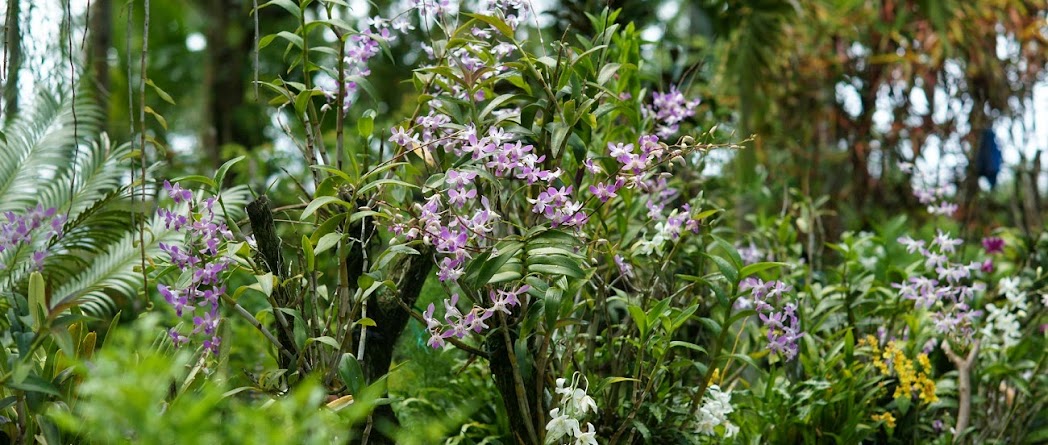 |
| Rhynchostylis gigantea var. vivaphandhul. |
 |
| Rhynchostylis gigantea var. vivaphandhul. |
| Rhynchostylis gigantea var. vivaphandhul. |
 |
| Rhynchostylis gigantea var. vivaphandhul. |
Rhynchostylis gigantea.
The most popular is certainly Rhynchostylis gigantea, it's getting the most attention in my country. because a inflorescences are long, and a strong smell. Colorful like candy. Rhynchostylis gigantea are a very big lip like a bird.
Species of Rhynchostylis
The most popular is certainly Rhynchostylis gigantea, it's getting the most attention in my country. because a inflorescences are long, and a strong smell. Colorful like candy. Rhynchostylis gigantea are a very big lip like a bird.
----------------------------------------------------------------------------------
Growing-Character
Rhynchostylis is monopodial-type; Orchids are growing always grows vertically. Bud that on apex will sprout leaves alternately, growth continues while old leaves and stem will die. Roots and leaves sprout alternately from below to upward. Bud completely healthy will sprout new plant.
Growing-Environment
Rhynchostylis orchids grow naturally in warm, moist, Shaded tropical areas. It's tolerant of a wider range of light conditions than other. Hobbyists wanting to grow them will need a warm, humid growing environment with air movement. Their unusually fragrant blooms often appear in the slightly cooler Winter months.
Despite being in the Vanda Tribe, they are very different from Vandas. It is They grow more slowly, their roots are more fragile, and almost any direct sun will harm them. However, they are typically grown with no potting mix on slat baskets or mounted just like Vandas.
Roots
Aerial roots; Most orchids grow on trees. Large Root which acts to store water to feed itself. Resistant to drought very well. If be grown in potting. Roots attaches potting for stem stable. If the orchid is completely healthy ,Root will branching away.
Species of Rhynchostylis
Rhynchostylis is one of the Orchid family, consisting of 3 currently species
- Rhynchostylis gigantea (Lindl.) Ridl.
- Rhynchostylis coelestis (Rchb.f.) A.H.Kent in H.J.Veitch
- Rhynchostylis retusa (L.)
Rhynchostylis native to the Indian Subcontinent, China, Indochina, Malaysia, Indonesia and the Philippines.
The Subtribe was changed from Sarcanthinae (Benth, 1881) to Aeridinae (Pfitzer, 1887) in 1972.
----------------------------------------------------------------------------------
Rhynchostylis gigantea (Lindl.) Ridl
- Rhynchostylis gigantea
- Rhynchostylis gigantea var. rattana, or "Sagarik Strain".
- Rhynchostylis gigantea var. vivaphandhul.
- Rhynchostylis gigantea var. alba.
Rhynchostylis gigantea was discovered in Burma (Myanmar) by Wallich.
In 1833. Lindley described as Saccolabium giganteum.
In 1896 Its was transferred to Rhynchostylis by Ridley.
Today, there was pollen-cross. Until its have varietal names applied to different color and forms.
Blooming
Rhynchostylis gigantea blooms in January to February.
Distribution
Rhynchostylis widespread in Hainan, Andaman Islands, Myanmar, Thailand, Vietnam, Laos, Cambodia, Malaysia, Borneo, Philippines






































